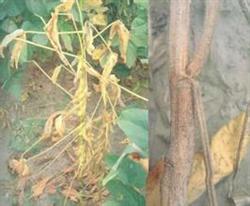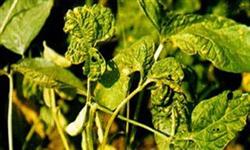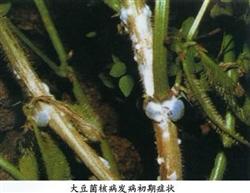Occurrence and control of soybean blight

Soybean seedling blight is commonly known as "dead tree","damping-off" and "black root disease". In serious disease years, the death rate of plants in light disease fields is 5%~10%, and the death rate of plants in serious disease fields is more than 30%. Some fields even die completely, resulting in no yield. 1. The symptoms of disease in the field were that the disease occurred only at seedling stage, reddish brown slightly depressed spots appeared at the base of taproots and stems near the ground, the cortex dehisced and ulcerated, and the hyphae of the pathogen were colorless at first and gradually turned brown later. Disease serious, short appearance, slow growth, stem by the ground russet, cortex cracking, was ulcerated. 2. The disease condition is continuous cropping, rotation is light. Because of the accumulation of bacteria in the soil for years increased the number of bacteria. Poor seed quality and disease severity. The pathogen of bacterial wilt can be transmitted by seeds, and it is related to the decrease of germination potential and disease resistance of seeds. The earlier the sowing, the longer the seedling grows in the field. Compost from diseased plants can transmit disease severity without decomposition. The disease was serious in the fields with many underground pests, poor soil quality, lack of fertilizer and poor soybean growth. 3. Disease resistant varieties were selected as control methods. Seed dressing. Seed dressing with 0.3% of seed amount of 40% clofos-methyl EC or 50% thiram WP. Seed crop rotation, 3-year rotation with gramineous crops. Choose dry land with good drainage to grow soybean. Low-lying land shall be planted in ridges or high ridges and deep grooves, with reasonable dense planting to prevent excessive surface humidity and timely drainage after rain. Watering depends on soil moisture and temperature. 4. At the beginning of the disease, the following agents were sprayed: 40% aluminum triethylphosphonate WP 200 times;70% ethyl phosphate WP 200 times; Manganese zinc wettable powder 500 times solution;58% metalaxyl? Manganese zinc wettable powder 500 times solution;69% Anke manganese zinc wettable powder 1000 times solution once every 10 days, continuous control 2~3 times, and spray evenly and fully.
- Prev

Prevention and control of soybean top blight
Soybean top blight, also known as bud blight, is one of the soybean virus diseases that have a great impact on yield. Due to different periods of onset, the loss caused was 25% to 100%. Similar symptoms appeared on the foreign varieties introduced in Shandong Province in 1962, and then there were similar symptoms in Hebei, Beijing, Liaoning, Jilin, Heilongjiang and other places.
- Next

Occurrence and control of Sclerotinia sclerotiorum in soybean
Sclerotinia sclerotiorum is a common disease on soybean crops, which mainly causes stem rot, pale lesions, hollow stems and black sclerotia, which is easy to break. In the past two years, soybean Sclerotinia sclerotiorum has a tendency to increase year by year. Causes and characteristics: 1. The number of sclerotia in the field Sclerotinia sclerotiorum is a fungus.
Related
- The first cup of black tea in spring, the flavor and history of tea gardens in Kenya, Africa
- The computer can not only choose potatoes, but also grow tea rice. AI will grow winter oolong tea champion.
- It is not only the inflated tea bitten by insects, but also engraved with the four seasons tea in Beipu.
- The Oriental Beauty Tea Festival in Zhuxian County takes the stage at the weekend to experience the plus-size feast of oil tea.
- & quot; Oriental Beauty Tea & Exploration of Emei in Hsinchu, the hometown of quot;
- The new variety of strawberry "Tainong 1" dessert is the first choice with mellow aroma. Crimson gorgeous
- History of Tea in Taiwan: from Wild Inner Mountain to Export Tea Garden
- Two types of Taiwan Oriental Beauty Black Tea won the British three-Star Award for Childhood Tea Xiang Zhang Jiaqi changed from pilot to champion tea maker.
- Banana species and varieties: the planting history of Taiwan Xianren banana and dwarf banana is long, is banana disease resistant?
- Coffee planting Technology: Qianjie Coffee from Seedling to harvesting

